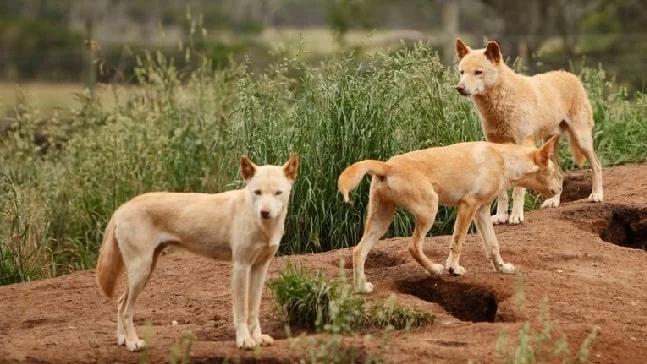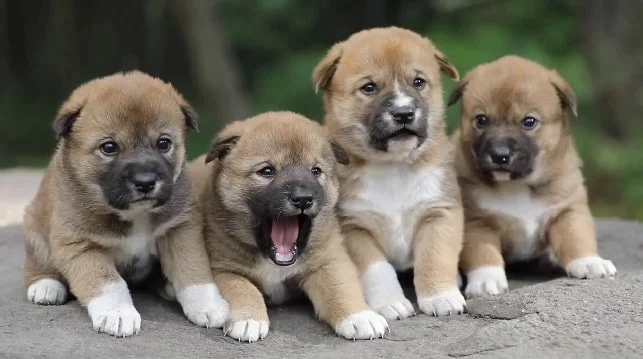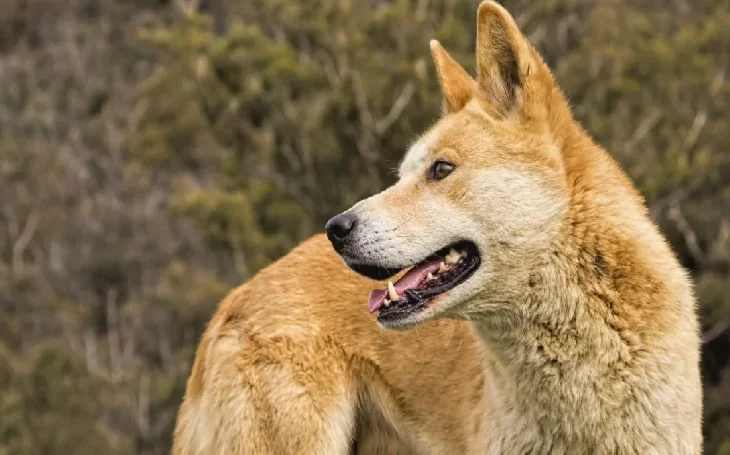Dingo Dog Breed Information
| Country of Origin | Australia |
| Nicknames and Other Names | None |
| Scientific Name | Canis |
| Breed Type | Either Purebred or Hybrid |
| Group | Either Half-Wolf, Primitive Dog or Other Species |
| Bred For | Source of Food in emergency |
| Size | Medium-Sized |
| Recognized By | None |
| Life Span | 3-5 Years in the wild 14-16 Years on average as pet |
| Ideal Weight | 50-70 Pounds (male and female) |
| Ideal Height | 20-24 Inches (male and female) |
| Fur Type | Short and Coarse |
| Common Colors | Light Ginger, Black and Tan, Creamy White |
| Markings | White Markings |
| Availability | Rarely Available |
| Achievements | None |
| Suitable for Apartments | No |
| Used in World War | No |
| Most Similar To | Mongrel |
Dingo is a medium-sized dog that is the native of Australia. It is also known as Wild Dog that is not completely domesticate. It is neither a wolf nor a complete dog, so the words lupus and familiaris are lost from its Latin name.
Dingo dog is a very adaptable dog breed that can adapt to any kind of harsh weather. The appearance of the Dingo dog is lean, muscular with a longer muzzle and flat skull. The coat is short and the tail is generally bushy.
History and Origin
The exact origin of the Dingo dog is unknown but it is believed to be originated in Australia. There is still some uncertainty whether the Dingo is half-wolf, primitive dog, half dog or some other species. There is a theory that they were brought by the migrating tribes in Australian some 4500 years ago. On their arrival in Australia, Dingoes were mostly kept by the Aboriginal groups as watchdogs and even a source of food in emergencies.
The Dingo is not considered as a purebred yet, so it has not been included in the FCI group. However, it still is a primitive dog breed.
Temperament, Behavior, and Personality
As Dingo is considered as a wild dog, people believed that they should not be kept as a family companion. However, Dingo too has its admirer and they have become quite popular with some owners that have started breeding them as a family pet.
Dingo dogs are generally shy towards human beings but according to the owners of Dingo, it is said that with early socialization and blending with a variety of people, they will get along with them. They are a highly territorial dog that is seen in the pack, mostly when there is prey. Their pack often consists of mated pair but few captive packs can also be seen.

Image Source: news,sky.com
Trainability
Dingo is a very independent dog which makes training them very tough. The only way to train them is with consistency and positive methods of training. Establish a firm leadership at an early age when they are eager to please. Start from basic obedience training and gradually move to advance training. Reward them with vocal praises ad treats as they complete a certain task.
Is Dingo Child-Friendly?
Dingo is known as a wild dog so it is not best to keep a dingo when you have children at home. If you are considering keeping one, it is best to keep them with older children who know to handle dogs and behave around them.
Facts
- Dingo is known as one of the few feral dogs that thrive in the wild and is illegal to keep them as a pet in its native Australia.
- There are three types of Dingoes: Desert Dingo, Alpine Dingo, and Northern Dingo.
- Dingo dogs have the owl-like abilities where they can swivel their heads about 180 degrees and have an impressive sense of vision.
Health Issues
| General Health | Healthy |
| Common Health Issues | Canine Distemper, Tapeworm, Heartworm, Hip Dysplasia |
| Hypoallergenic | No |
| Vaccination Required | Canine Parainfluenza, Rabies, Leptospirosis, Canine Coronavirus, Canine Parvovirus, Canine Distemper, Kennel Cough, |
| Shedding | Moderate Shedder |
| Drooling | Low Drooler |
| Grooming | Easy and Minimal Grooming Required |
| Weight Gain Potential | Low |
| Separation Anxiety | High Chance |
| Allergies | Skin Allergies |
| Diets and Supplements | Portein: 23% Fat: 8% Digestive Enzymes Fish Oil Multivitamins |
Dingo is generally a healthy dog that can have a few possible health problems.
- Heartworm: Heartworm in dogs is dangerous as well as difficult to remove and costly. The heartworms inside the dogs mature, mate and produce the offsprings inside causing lasting damage inside the heart.
- Tapeworm: When your dog ingests a host that contains tapeworm eggs, it will develop in an adult. As the worm matures, the segments break and it will end up in dogs stool. The treatment is very simple but with carelessness, it can get worse.
Colors
The Dingo dogs come in the following colors:
- Reddish Brown
- White Chest
- Black or Sandy
- Golden Yellow
- Light Cream
Puppies

Image Source: youtube
Cost: The average cost of the Dingo is between $500-$1000 USD.
Size
Height: The average height of the Dingo is between 20-24 inches.
Weight: The average weight of the Dingo dog is between 50-70 pounds.
Similar Dog Breeds to Dingo Dog
Visit Doglime for more dog breed information and their behavior.
Tags











I have a dog that I have a strong suspicion that she is a hybrid dingo. Mom was a puggle (pug x begale). Dad is unknown. She has rotating wrists and is very active, intelligent, independent, loyal, we have to go thru a long greeting period whenever I come home and she hasn’t been with me, which she hates. When she was younger she had white feet and chest . She is a reddish tan and has double coat. I’d love to find out if she truly is dingo. The rotating wrists are a perty sure sign she definitely has some level of dingo in her bloodline.